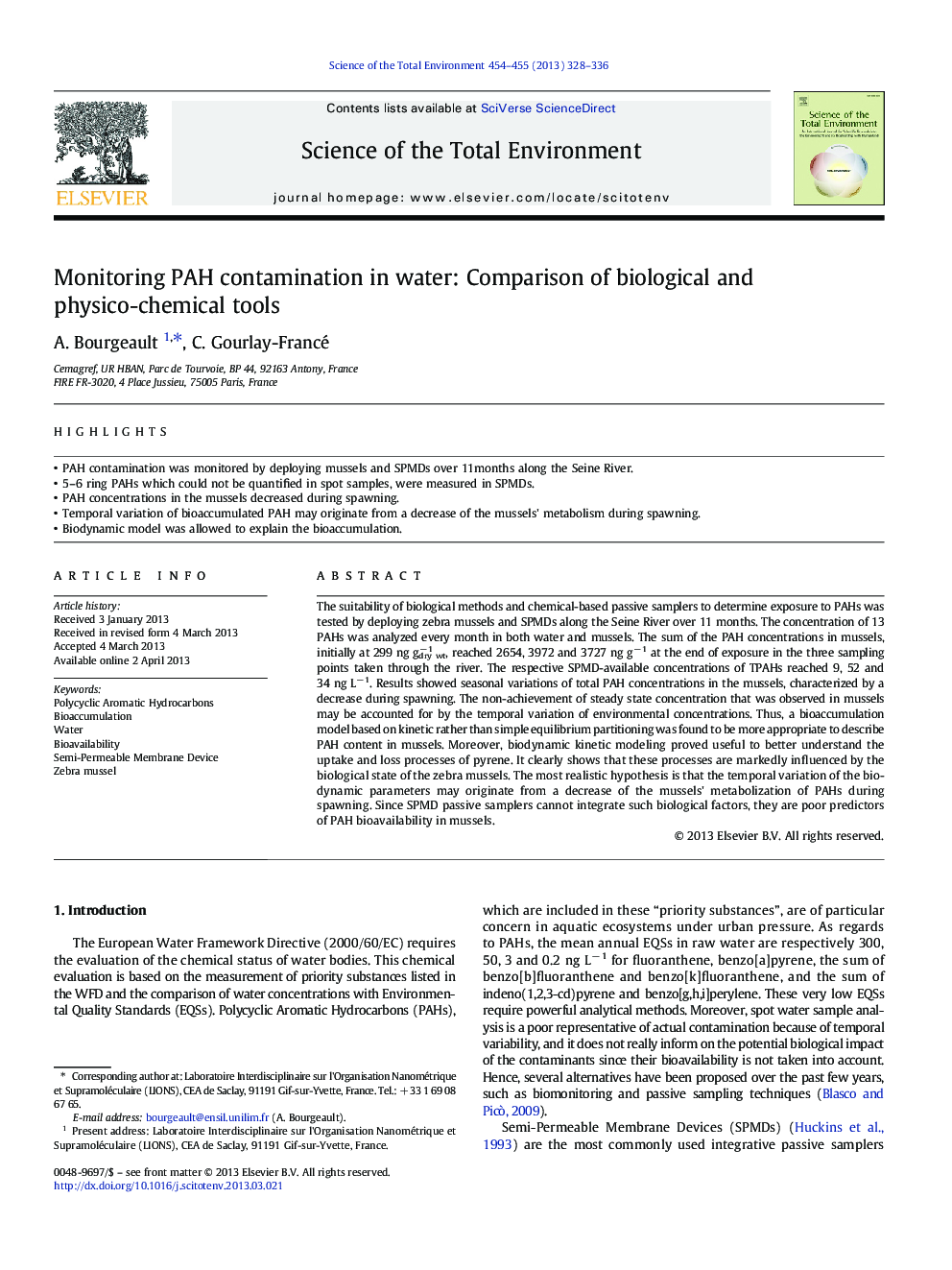| Article ID | Journal | Published Year | Pages | File Type |
|---|---|---|---|---|
| 6332999 | Science of The Total Environment | 2013 | 9 Pages |
Abstract
The suitability of biological methods and chemical-based passive samplers to determine exposure to PAHs was tested by deploying zebra mussels and SPMDs along the Seine River over 11 months. The concentration of 13 PAHs was analyzed every month in both water and mussels. The sum of the PAH concentrations in mussels, initially at 299 ng gdry wtâ 1, reached 2654, 3972 and 3727 ng gâ 1 at the end of exposure in the three sampling points taken through the river. The respective SPMD-available concentrations of TPAHs reached 9, 52 and 34 ng Lâ 1. Results showed seasonal variations of total PAH concentrations in the mussels, characterized by a decrease during spawning. The non-achievement of steady state concentration that was observed in mussels may be accounted for by the temporal variation of environmental concentrations. Thus, a bioaccumulation model based on kinetic rather than simple equilibrium partitioning was found to be more appropriate to describe PAH content in mussels. Moreover, biodynamic kinetic modeling proved useful to better understand the uptake and loss processes of pyrene. It clearly shows that these processes are markedly influenced by the biological state of the zebra mussels. The most realistic hypothesis is that the temporal variation of the biodynamic parameters may originate from a decrease of the mussels' metabolization of PAHs during spawning. Since SPMD passive samplers cannot integrate such biological factors, they are poor predictors of PAH bioavailability in mussels.
Keywords
Related Topics
Life Sciences
Environmental Science
Environmental Chemistry
Authors
A. Bourgeault, C. Gourlay-Francé,
